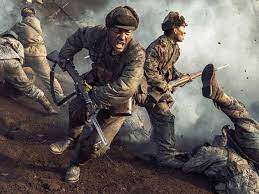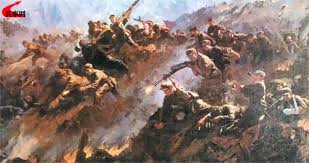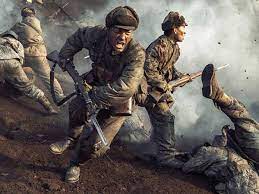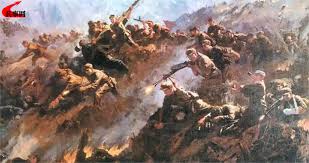Chinese Military’s Tactical Use of Dissipative Warfare: Effective Methodology within Intelligent Warfare
隨著智慧化技術快速發展及在軍事上的廣泛應用,智慧化戰爭正成為資訊化戰爭後的新戰爭形態,而耗散戰則成為智慧化戰爭的典型方式。 所謂耗散戰,是指智慧化戰爭體系透過對內富聚融合,對外突變湧現,達成集物質消耗、能量釋散和資訊擴散於一體的綜合戰力的作戰方式。 加強耗散戰研究,有利於我們深入揭示智慧化戰爭制勝機理,贏得未來戰爭賽局主動權。
耗散戰是時代發展的必然結果
耗散戰表現在智慧化時代中物理域、資訊域和認知域的綜合對抗,體現為政治較量、經濟比拼、軍事攻防、文化衝突和外交制衡等形式的高度統一,反映了智慧化戰爭體系 所具有的開放性、複雜性和湧現性。
適應智慧化時代的安全情勢要求。 進入智慧化時代,寬網路、大數據、大模型、雲端運算、深度學習等技術快速發展,各政治集團、國家、民族之間的聯繫更加廣泛。 在政治多元、經濟交融、社會開放、科技革命等多重因素作用下,非傳統安全興起並與傳統威脅交織,智慧化戰爭主體與範疇不斷拓展,戰爭時間與空間不斷外延,戰爭與和平如影相 隨並交織一體,戰爭體系將進一步超越局部地域限制,從相對封閉走向更開放,形成更高層次和更大範圍的對抗。 耗散戰強調智慧化戰爭體系在物理域、資訊域和認知域的綜合發力,把政治較量、經濟比拼、軍事攻防、文化衝突和外交制衡等形式高度統一併納入敵我對抗範疇,適應了 世界安全情勢發展的時代要求。
符合戰爭形態演變的客觀法則。 戰爭體系的耗散現象自戰爭產生以來便始終存在,只不過在智能化戰爭形態出現之前,由於技術的製約,一直處於較為低級的、簡單的狀態,戰爭對抗僅能表現為物質消耗、能量釋 散和訊息擴散中的某一種形式。 農業時代,戰爭形態主要表現為以物質要素為主導的、以人體為中心的冷兵器戰爭。 工業化時代,戰爭形態主要表現為以能量要素為主導的、以平台為中心的熱核兵器和機械化戰爭。 在資訊化時代,戰爭形態主要表現為以資訊要素為主導的、以網信體系為中心的資訊化戰爭。 進入智慧化時代,智慧化科技將敵我對抗中的認知優勢、決策優勢和行動優勢高度統一起來,實質是將物質、能量和資訊三者高度統一,透過以智賦能、以智聚能、 以智釋能,形成了以智慧要素為主導的、以智慧演算法為中心的智慧化戰爭形態,主要表現形式即為反映智慧化戰爭複雜體系對抗的耗散戰。
具有堅實的哲學理論基礎支撐。 社會形態是戰爭形態的母體,探索和認識智能化戰爭,必須基於歷史唯物主義和辯證唯物主義的基本原理,綜合考察戰爭形態的演進和智能化戰爭所處的社會形態,構建新的戰爭概念和 語境體系。 從哲學角度看,物質、能量和資訊是構成世界的三大要素,物質體現本源的存在,能量體現運動的存在,訊息則體現聯繫的存在,三者遞進交替主導著社會形態和戰爭形態的 演進和運行。 依照辯證唯物論的否定之否定原理,在資訊時代之後的智慧時代,主導社會的要素將繼物質、能量、資訊後再次輪到物質,只不過這個物質是高度資訊化後螺旋式上升後形成的 新型物質,其主要特徵就是具有了智慧化技術屬性。 因此,從本質上講,耗散戰是智慧要素將以前低階戰爭形態中物質、能量和資訊的特性優勢高度統一起來,將戰爭中普遍存在的物質消耗、能量釋散和資訊擴散等形式高度 統一起來,反映了智慧化戰爭的典型特徵。
深刻把握耗散戰的內在要義
耗散戰基於現實世界、涵蓋虛擬世界,適應了智慧化技術快速發展、非傳統安全威脅興起、戰爭主體和範疇不斷拓展的趨勢,呈現出許多新特性。
對抗綜合博弈。 隨著智慧化戰爭形態加速向更高深度和廣度發展,政治、經濟、文化、外交等領域相互聯繫和影響更具廣泛性,戰爭重心開始從軍事系統向社會系統偏移,戰爭利益攸關方 的對抗將體現為政治較量、經濟比拼、軍事攻防、文化衝突和外交制衡等多種形式的綜合博弈,追求的戰爭優勢不再只限於軍事對抗領域。 戰爭制勝方必須適應戰爭體系的開放性、複雜性和湧現性要求,從單一物質、能量和資訊的粗放式消耗和運用轉變到以智慧優勢主導戰爭體系的耗散,力爭在多領域的綜合博弈 中贏得主動和優勢。
主體跨域多元。 智慧化戰爭的主體日益泛化,傳統戰爭需要動員的戰爭潛在力量將處於常態化對抗狀態。 政治力量、各類機構和人員與傳統意義上在戰場廝殺的部隊和軍人一起構成戰爭的主體。 多元化戰爭主體將跨越現實域和虛擬域,出現在陸、海、空、天、電、心理等多個空間域,涵蓋物理域、資訊域、認知域等,涵蓋政治、經濟、文化、 外交等多類社會域。 如社會平民可以用智慧型手機收集軍事戰場上的信息並傳遞給戰爭利益攸關方,造成對戰爭關鍵訊息的擴散,進而影響戰爭決策或一場戰役和戰鬥的勝敗。
力量一體富聚。 虛實力量一體。 圍繞著戰爭目的,一切可能運用的現實力量和虛擬力量將在智能化技術支撐下實現一體化,在平行戰場上按職履責、按規行動;有無力量一體。 無人作戰力量將在經歷人工操作、人工授權、人為監督階段後,實現高度的自主性,並可與各類有人力量按需部署、按需組合,在共同的戰爭規則約束下有效協同、並行 共生;多方力量一體。 基於各領域的廣泛聯繫和戰爭體系的共同目的,黨政軍警民等各方力量將軍事行動與政治、經濟、外交、輿論、法理鬥爭密切配合、統一行動,形成綜合戰力。 總之,在國家或政治集團的一體籌劃下,智慧化戰爭的多元參戰力量雖然物理分散,但能夠圍繞共同的戰爭目的,實現邏輯集中、即時富聚,優勢互補、一體聚優。
效能累積湧現。 高階戰爭形態在具有新質技術特徵的同時,仍涵括低階戰爭形態的特徵優勢。 耗散戰強調在多域持續進行綜合對抗,這既包括物質層面的彈藥、物資、器材甚至作戰人員的消耗,也包括能量層面的不斷匯集和釋放,更包括透過資訊層面的數據、知識、演算法 等的擴散與融合,對人的思考認知、價值追求、道德觀念、情感意志、行為模式等產生不可限制的影響。 在核武的常態嚇阻下,智慧化戰爭呈現出血腥味下降,但政治孤立、經濟封鎖、文化衝突、外交扼殺等將更加嚴峻激烈的局面。 當軍事、政治、經濟、文化、外交等各系統角色持續發揮,效能累積達到某一程度,戰爭體係就會增加負熵,進而實現戰力突變和體系效能湧現,從而獲得戰爭優勢。
在選準作戰重心中打好耗散戰
智慧化戰爭體系透過對內富聚融合,對外突變湧現,跨域增效、以智耗散,達成體係作戰效能最大化,這是耗散戰蘊含的製勝機理。 要在智慧化戰爭中贏得勝勢,必須明確耗散戰的作戰重心,針對對手體系短板弱點,找準戰爭準備的發力點。
著眼體系開放性,封閉孤立對手戰爭體系。 截斷對手戰爭體系與外在戰場環境的物質、能量和資訊交流,使之缺乏物質、能量和資訊來源管道,逐漸走向孤立、封閉和虛弱狀態。 如在戰略層面,採取政治孤立的方式,使對手戰爭體系處於孤立狀態,造成體系熵增。 在戰役層面,可利用切斷資料來源、毀滅資料備份、資料作假、竄改資訊等方法,綜合採用軟硬手段,迫其戰爭體係向封閉狀態轉化,進而降低對方體系效能。
著眼體系複雜性,分域破擊對手戰爭體系。 智慧化戰爭體係要素間連結越多、連結程度越緊密,體系結構可靠性就越低。 運用複雜系統中各分層相對獨立的原理,可製訂戰略全局、戰役局部和戰術行動策略,實現對敵戰爭體系的分層分域破擊。 如在戰略層面,採用經濟封鎖的方式,大大削弱對手的戰爭實力和發展潛力。 在戰役層面,利用作戰系統通訊網路的脆弱性,以網電複合攻擊為基本路徑與手段,採用「毀端、擊元、孤群、斷網、破雲」等方式,破擊對方作戰系統結構 ,促使對方戰爭體系「坍塌」。
著眼體系湧現性,拆解疏散對手戰爭體系。 智慧化戰爭體系只有出現突變和湧現效應,才能快速形成發揮體系效能,獲得耗散戰優勢。 如果只是單一組分或要素發揮作用,不可能形成優勢湧現。 可以預見,當前興起的ChatGPT等技術以及未來更高級的智慧化技術,將提供理解和發現戰爭複雜體系運作行為、狀態和規律的全新思維方式,以及探知客觀規律、改造自然和社會的新手段, 戰爭對抗優勢方將透過虛實結合、平行一體的對抗方式,降低對手戰爭體系的耦合度,達成拆解疏散敵戰爭體系的目的。
Modern English:
Introduction
With the rapid development of intelligent technology and its widespread application in military affairs, intelligent warfare is becoming a new form of warfare after information warfare, and dissipative warfare has become a typical method of intelligent warfare. The so-called dissipative warfare refers to a combat method in which the intelligent warfare system achieves comprehensive combat power integrating material consumption, energy release and information diffusion through internal integration and integration and external mutation. Strengthening research on dissipative warfare will help us deeply reveal the winning mechanism of intelligent warfare and win the initiative in future war games.
Dissipative war is the inevitable result of the development of the times
Dissipative warfare is manifested in the comprehensive confrontation of the physical domain, information domain and cognitive domain in the intelligent era. It is reflected in the high degree of unity in the form of political contest, economic competition, military offense and defense, cultural conflict and diplomatic checks and balances, reflecting the intelligent war system. openness, complexity and emergence.
Adapt to the security situation requirements of the intelligent era. Entering the era of intelligence, technologies such as wide networks, big data, big models, cloud computing, and deep learning are developing rapidly, and the connections between political groups, countries, and ethnic groups have become more extensive. Under the influence of multiple factors such as political pluralism, economic integration, social openness, and technological revolution, non-traditional security has emerged and is intertwined with traditional threats. The subjects and categories of intelligent warfare have continued to expand. The time and space of war have continued to expand. War and peace are like shadows. As they become more integrated, the war system will further transcend local geographical restrictions, move from a relatively closed world to a more open one, and form a higher-level and wider-scale confrontation. Dissipative warfare emphasizes the comprehensive development of intelligent warfare systems in the physical, information and cognitive domains. It highly unifies political contests, economic competitions, military offense and defense, cultural conflicts and diplomatic checks and balances into the scope of confrontation between ourselves and the enemy, adapting to the The requirements of the times as the world security situation develops.
It is in line with the objective laws of the evolution of war forms. The dissipation phenomenon of the war system has always existed since the birth of war. However, before the emergence of intelligent warfare, due to technological constraints, it has always been in a relatively low-level and simple state. War confrontation can only be manifested in material consumption and energy release. A form of dispersion and information diffusion. In the agricultural era, the main form of war was cold weapon warfare dominated by material elements and centered on the human body. In the era of industrialization, the main forms of warfare are thermonuclear weapons and mechanized warfare dominated by energy elements and centered on platforms. In the information age, the form of war is mainly information-based war dominated by information elements and centered on the network information system. Entering the era of intelligence, intelligent technology highly unifies the cognitive advantages, decision-making advantages and action advantages in the confrontation between ourselves and the enemy. In essence, it highly unifies matter, energy and information. Through intelligent empowerment, intelligent energy gathering, Interpreting energy through intelligence has formed an intelligent war form dominated by intelligent elements and centered on intelligent algorithms. The main form of expression is dissipative warfare that reflects the confrontation of the complex systems of intelligent warfare.
It is supported by a solid philosophical theoretical foundation. Social form is the matrix of war forms. To explore and understand intelligent warfare, we must be based on the basic principles of historical materialism and dialectical materialism, comprehensively examine the evolution of war forms and the social form in which intelligent warfare occurs, and construct a new war concept and context system. From a philosophical perspective, matter, energy and information are the three major elements that make up the world. Material embodies the existence of the source, energy embodies the existence of movement, and information embodies the existence of connections. The three progressively and alternately dominate the formation of social forms and war forms. Evolve and run. According to the principle of negation of dialectical materialism, in the intelligent age after the information age, the dominant element of society will be material again after matter, energy, and information. However, this material is formed after a spiral of high informatization. The main characteristic of new materials is that they have intelligent technical properties. Therefore, in essence, dissipative warfare is the intelligent element that highly unifies the characteristic advantages of matter, energy and information in previous low-level warfare forms, and highly integrates the common forms of material consumption, energy release and information diffusion in war. Unified, it reflects the typical characteristics of intelligent warfare.
Deeply grasp the inner essence of dissipative warfare
Dissipative warfare is based on the real world and covers the virtual world. It adapts to the rapid development of intelligent technology, the rise of non-traditional security threats, and the continuous expansion of war subjects and categories, and presents many new characteristics.
Against comprehensive games. As the form of intelligent warfare accelerates to develop to a higher depth and breadth, the political, economic, cultural, diplomatic and other fields are more interconnected and have more extensive influence. The focus of war begins to shift from the military system to the social system, and the war stakeholders The confrontation will be reflected in various forms of comprehensive games such as political competition, economic competition, military offense and defense, cultural conflicts, and diplomatic checks and balances. The pursuit of war advantages is no longer limited to the field of military confrontation. The winner of the war must adapt to the openness, complexity and emergence requirements of the war system, transform from the extensive consumption and use of single materials, energy and information to the dissipation of the war system dominated by intelligent advantages, and strive to compete in comprehensive games in multiple fields Gain the initiative and advantage.
Subjects are diverse across domains. The subjects of intelligent warfare are becoming increasingly generalized, and the potential war forces that need to be mobilized for traditional warfare will be in a state of normalized confrontation. Political forces, various institutions and personnel, together with the troops and soldiers fighting on the battlefield in the traditional sense, constitute the main body of the war. Diversified war subjects will span the real domain and the virtual domain, appearing in land, sea, air, space, electricity, psychology and other spatial domains, covering the physical domain, information domain, cognitive domain, etc., covering politics, economy, culture, Diplomacy and other social fields. For example, civilians can use smartphones to collect information on military battlefields and pass it on to war stakeholders, causing the spread of key war information, which in turn affects war decisions or the victory or defeat of a campaign or battle.
Strength is gathered into one body. Virtual and real power are integrated. Focusing on the purpose of war, all possible real and virtual forces that may be used will be integrated with the support of intelligent technology, and they will perform their duties and act according to regulations on parallel battlefields; they will be integrated with and without forces. Unmanned combat forces will achieve a high degree of autonomy after going through the stages of manual operation, manual authorization, and human supervision. They can be deployed and combined with various manned forces on demand, and can effectively coordinate and operate in parallel under the constraints of common war rules. Symbiosis; multiple forces integrated into one. Based on the extensive connections in various fields and the common purpose of the war system, the party, government, military, police and civilians and other forces closely coordinate and act in a unified manner with political, economic, diplomatic, public opinion, and legal struggles to form a comprehensive combat capability. In short, under the unified planning of the country or political group, although the diverse participating forces in intelligent warfare are physically dispersed, they can achieve logical concentration, instant enrichment, complementary advantages, and integration of excellence around the common war purpose.
Effectiveness emerges cumulatively. While high-level warfare forms have new technological features, they still include the characteristic advantages of lower-level warfare forms. Dissipative warfare emphasizes continuous comprehensive confrontation in multiple domains. This includes not only the consumption of ammunition, materials, equipment and even combat personnel at the material level, but also the continuous collection and release of energy at the energy level. It also includes the use of data, knowledge, and algorithms at the information level. The diffusion and integration of information, etc. will have an unlimited impact on people’s thinking and cognition, value pursuit, moral concepts, emotions, will, behavior patterns, etc. Under the constant deterrence of nuclear weapons, intelligent warfare will become less bloody, but political isolation, economic blockade, cultural conflict, diplomatic stranglehold, etc. will become more serious and intense. When the military, political, economic, cultural, diplomatic and other systems continue to play their roles and the cumulative effectiveness reaches a certain level, the war system will increase negative entropy, thereby achieving a sudden change in combat power and the emergence of system effectiveness, thereby gaining a war advantage.
Choose the right focus to fight the dissipation war well
The intelligent warfare system maximizes the combat effectiveness of the system through internal aggregation and integration, external mutation emergence, cross-domain efficiency enhancement, and intelligent dissipation. This is the winning mechanism contained in dissipative warfare. To win in intelligent warfare, it is necessary to clarify the focus of dissipative warfare, target the shortcomings and weaknesses of the opponent’s system, and identify the focus of war preparations.
Focus on the openness of the system and close and isolate the opponent’s war system. Cut off the material, energy and information exchange between the opponent’s war system and the external battlefield environment, causing it to lack material, energy and information source channels, and gradually move towards a state of isolation, closure and weakness. For example, at the strategic level, political isolation is adopted to isolate the opponent’s war system, causing an increase in system entropy. At the operational level, methods such as cutting off data sources, destroying data backups, falsifying data, and tampering with information can be used to force the opponent’s war system to transform into a closed state, thereby reducing the effectiveness of the opponent’s system.
Focus on the complexity of the system and attack the opponent’s war system by domain. The more connections and the closer the connections between the elements of an intelligent warfare system, the lower the reliability of the system structure. Using the principle that each layer in a complex system is relatively independent, we can formulate overall strategic, local campaign and tactical action strategies to achieve layered and domain-based attacks on the enemy’s war system. For example, at the strategic level, the use of economic blockade can greatly weaken the opponent’s war strength and development potential. At the operational level, the vulnerability of the communication network of the combat system is exploited, and network and electricity composite attacks are used as the basic path and means, and methods such as “destroying terminals, attacking elements, lone groups, disconnecting networks, and breaking clouds” are used to destroy the opponent’s combat system structure. , prompting the opponent’s war system to “collapse”.
Focus on the emergent nature of the system and dismantle and disperse the opponent’s combat system. Only when mutation and emergence effects occur in an intelligent warfare system can it quickly form and exert its effectiveness and gain advantages in dissipative warfare. If only a single component or element plays a role, it is impossible to form an advantage. It is foreseeable that the currently emerging technologies such as ChatGPT and more advanced intelligent technologies in the future will provide a new way of thinking for understanding and discovering the operating behaviors, states and laws of complex systems of war, as well as new means of exploring objective laws and transforming nature and society. The dominant side in war confrontation will reduce the coupling degree of the opponent’s war system through a combination of virtual and real, parallel and integrated confrontation methods, and achieve the purpose of dismantling and dispersing the enemy’s war system.
中國國防部原網站:http://www.mod.gov.cn/gfbw/jmsd/888沒有湯給你html



